Forest Management: Best Sustainable Practices
- December 1, 2023
- 1 comment
In the intricate tapestry of our planet’s ecosystems, forests stand as vital threads. They are not only commercial powerhouses but also crucial in maintaining the delicate balance of our environment, offering clean air, water, and a sanctuary for diverse wildlife.

Yet, the common misconception that these natural havens sustain themselves without human intervention couldn’t be further from the truth. In reality, forest management is a cornerstone for both ecological harmony and commercial viability. Without it, woodlands can deteriorate, becoming susceptible to disease, insect infestation, and destructive wildfires, ultimately losing their productive and ecological value.
What Is Forest Management?
Forest management is a multifaceted endeavor aimed at balancing environmental, social, and economic objectives. This encompasses ensuring forest security, preserving ecosystem health, and enhancing the production of wood-based goods and services. Managed predominantly by national authorities, forest management demands a complex array of administrative, financial, legal, and scientific decision-making. It’s imperative to maintain our planet’s health, countering the impacts of unchecked deforestation and pollution. Yet, a globally unified system isn’t feasible due to varied regional socio-economic conditions, placing additional responsibility on local governments and private entities to harmonize public needs with environmental stewardship.
Forest Management Planning

Effective forest management is underpinned by strategic planning, which guides landowners in shaping their woodland’s future. Such plans, both detailed and general, serve multiple purposes: decision-making guidance, legal compliance documentation, and securing licensing and grants. These working documents, periodically reviewed and adjusted, outline both short-term actions and long-term visions, complete with maps and schedules, crafted with the input of specialists like foresters, soil scientists, and biologists.
Best Forest Management Practices
1. Timber Harvesting
Timber harvesting is a multifaceted and essential aspect of forest management, intricately linked to both the health of woodlands and their economic utility. It involves several methods, each designed to meet specific forestry objectives and to suit different types of forest environments. Understanding these methods helps in appreciating how timber harvesting balances the ecological and economic needs of a forest.
Clear-Cutting
This method involves the complete removal of all trees from a specific area. Clear-cutting is often used in forests where tree species are uniform and where the objective is to harvest as much timber as possible in a short period. While it’s sometimes criticized for its environmental impacts, clear-cutting can be beneficial for regenerating species that require full sunlight and open space to thrive.
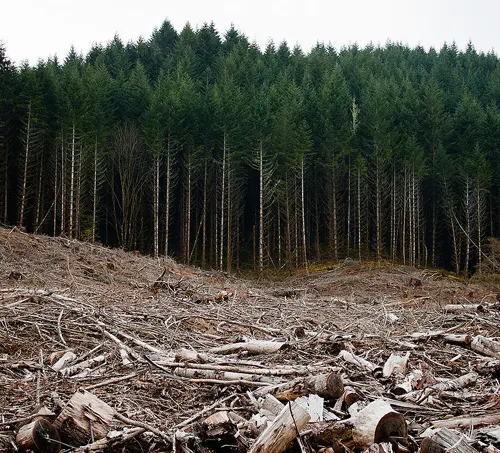
Selective Logging
Unlike clear-cutting, selective logging targets only certain trees for harvesting, leaving the rest intact. This method is often used for managing mixed-species forests, as it helps maintain forest structure and diversity. Selective logging can be further categorized into:
- Removing small groups of trees to create openings in the forest promotes shade-intolerant species’ growth.
- Removing individual trees based on their size or quality encourages the growth of younger trees and maintains a diverse age structure within the forest.
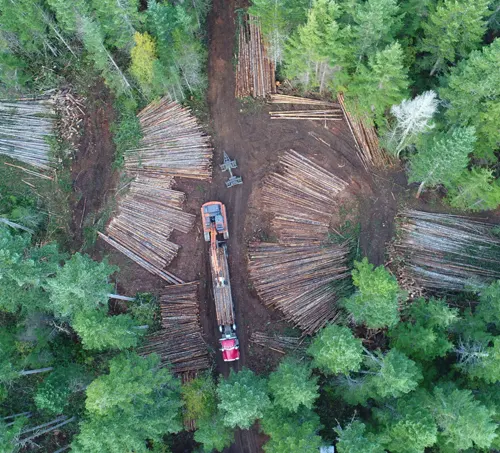
Shelterwood Cutting
This method involves the gradual removal of trees to establish a new generation of seedlings under the protection of older trees. It is often used in forests where species require both protection and moderate sunlight for growth. The process is typically carried out in stages, eventually resulting in the new generation of trees replacing the old.
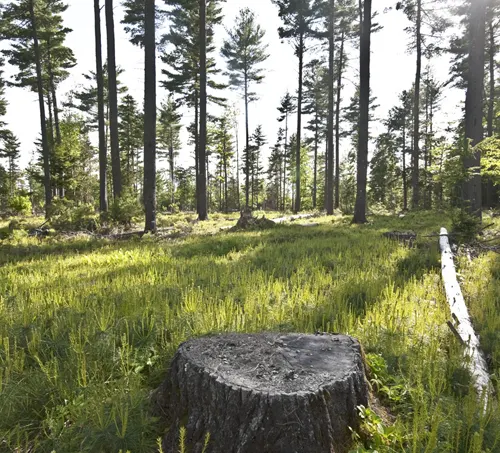
Seed Tree Cutting
Similar to shelterwood, this method leaves a small number of mature, seed-producing trees standing to regenerate the forest. After the new generation is established, the remaining older trees can be harvested.
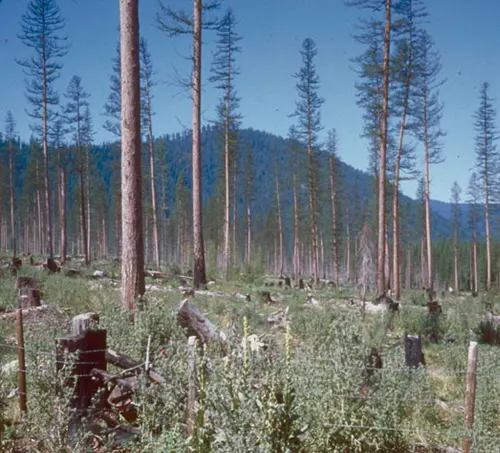
The economic benefits of timber harvesting are significant. It supports industries such as paper production, construction, and furniture manufacturing. Moreover, in areas where eco-tourism is prevalent, managed forests provide aesthetic and recreational value, contributing to the local economy.
From an ecological standpoint, responsible timber harvesting can enhance forest health. It can help control pests and diseases, promote species diversity, and improve habitat conditions for wildlife. For instance, selective logging and shelterwood cutting can create a varied forest structure, which is beneficial for many wildlife species.
2. Timber Thinning
Timber thinning is an indispensable practice in sustainable forest management, primarily aimed at reducing competition among trees for vital resources such as light, water, and nutrients. By strategically removing certain trees from a densely populated forest, timber thinning promotes the growth and health of the remaining trees. This practice is categorized into two main types: commercial thinning and pre-commercial thinning, each serving specific objectives and forest types.
Commercial Thinning
Commercial thinning is conducted in maturing forests where trees have reached a marketable size. The objective is to selectively remove trees that are of commercial value, thereby providing immediate economic returns to the landowner or manager.
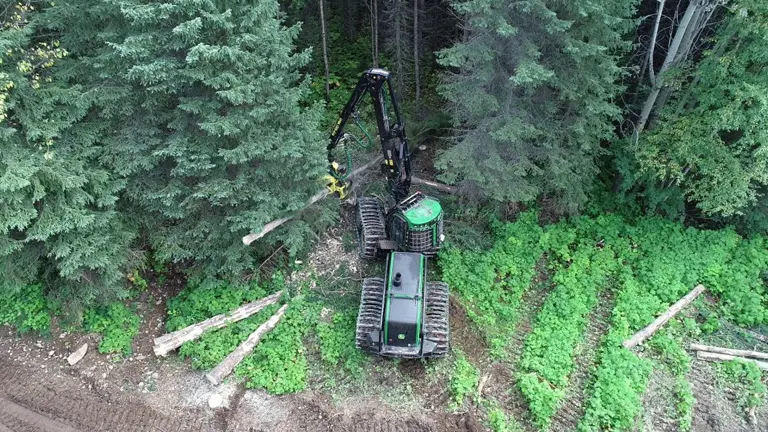
This selective removal process benefits the forest in several ways:
- By reducing crowding, the remaining trees have more access to sunlight, water, and soil nutrients, which accelerates their growth rate and overall health.
- Thinned forests are generally more resilient to environmental stresses such as drought, pests, and diseases.
- This practice can also help in maintaining a diverse age structure and habitat within the forest, which is beneficial for wildlife.
Commercial thinning is not just a means of generating revenue; it’s a strategic tool for long-term forest health and sustainability.
Pre-commercial Thinning
Pre-commercial thinning, on the other hand, is carried out in younger forests where trees have not yet reached a size or age suitable for commercial harvesting.
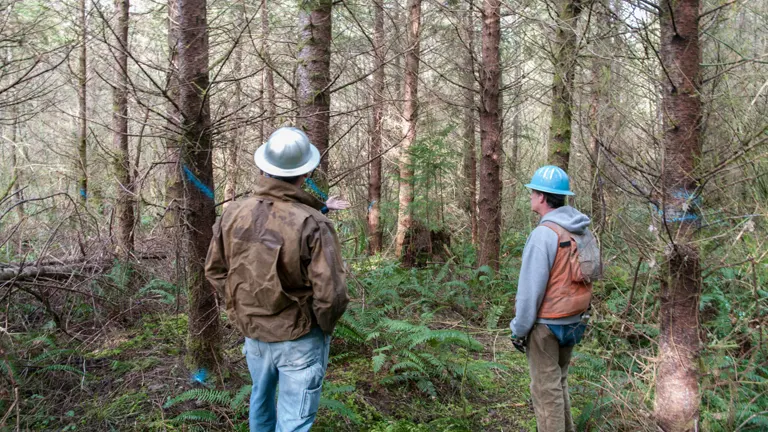
The primary goal here is ecological rather than economic:
- This form of thinning removes excess saplings and small trees, reducing competition and allowing the remaining trees to develop better in terms of size and health.
- It allows for the management of species composition within the forest, promoting the growth of desirable tree species over less desirable ones.
- While pre-commercial thinning does not provide immediate economic benefits, it sets the stage for a more productive and valuable forest in the future.
Timber thinning represents a crucial balance between immediate economic gains and long-term ecological benefits. In commercial thinning, the short-term financial returns are coupled with the long-term growth and health of the forest. Pre-commercial thinning, while lacking immediate economic benefits, is a forward-looking practice that ensures the future vitality and productivity of the forest.
3. Prescribed Burning
Prescribed burning, a critical practice in forest management involves the controlled application of fire to a predetermined area under specific conditions.
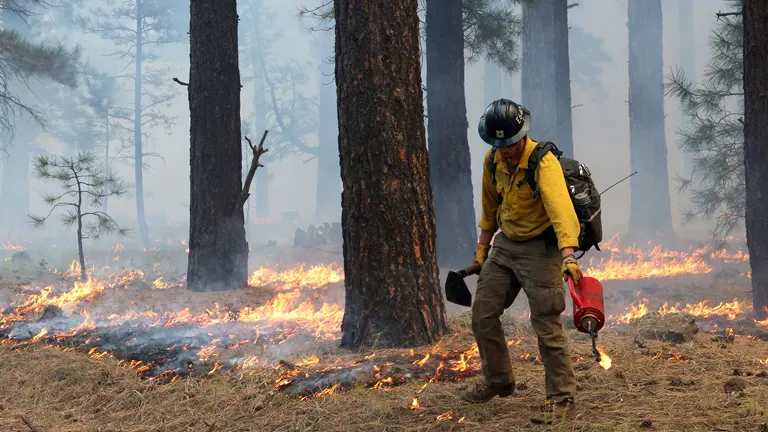
This method serves several vital functions in maintaining the health and safety of forest ecosystems:
- By burning accumulated underbrush and dead vegetation, prescribed burns significantly reduce the risk of catastrophic wildfires. They effectively manage fuel loads in the forest, diminishing the intensity and potential spread of uncontrolled fires.
- Prescribed burning is instrumental in promoting the growth of certain fire-adapted plant species, essential for the regeneration of healthy forest ecosystems. This process facilitates seed germination for some species and clears the ground for others to flourish, thereby maintaining biodiversity.
- Controlled burns can disrupt the life cycles of certain pests and diseases that afflict forests, aiding in their management and control. This contributes to the overall health and vitality of the forest.
- Conducted by trained professionals, these burns are carefully planned considering weather, fuel moisture, and wind patterns to ensure control and effectiveness.
4. Reforestation
Reforestation stands as a cornerstone of sustainable forest management, vital for the restoration and continuation of healthy forest ecosystems. This practice involves replanting and regenerating forested areas that have been depleted or damaged, either through natural processes or human activities. There are two primary approaches to reforestation: natural regeneration and artificial reforestation.
Natural Regeneration
Natural regeneration in reforestation harnesses the inherent processes of forest recovery, primarily through seed dispersal. In this method, trees repopulate an area naturally, with seeds spread by wind, animals, or other organic means.
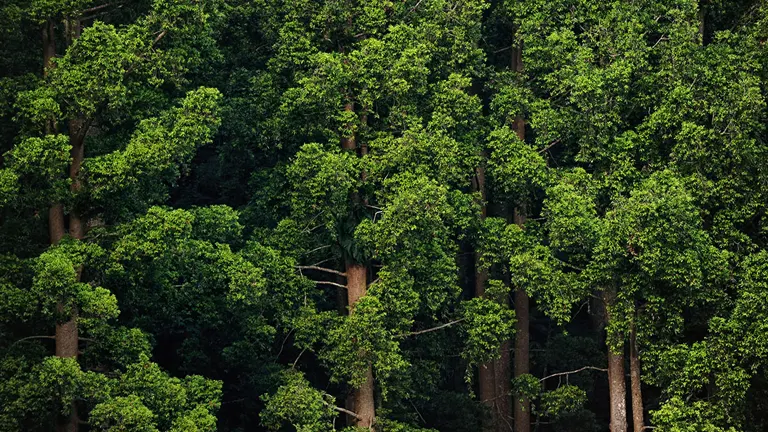
This approach offers significant advantages, chiefly its cost-effectiveness and the promotion of genetic diversity, leading to a more resilient forest ecosystem. Natural regeneration tends to be most successful in locations adjacent to existing forests or in areas with a favorable seed bank and suitable soil conditions. These factors contribute to a conducive environment for growth, allowing the forest to rejuvenate in a way that aligns closely with natural ecological patterns.
Artificial Reforestation
Artificial reforestation, often referred to as active reforestation, is a method that requires deliberate human intervention to restore forest areas. This process usually involves the direct planting of tree saplings or seeds in landscapes where forests have been significantly degraded or completely destroyed. A key aspect of this approach is the careful selection and management of tree species. Landowners and forest managers can choose specific species that align with their objectives, whether that’s for timber production, habitat restoration, or enhancing the forest’s resilience to climate change. Additionally, they have the control to strategically manage the spacing and arrangement of the planted seedlings, which is crucial for optimizing the overall growth and health of the new forest.

One of the primary benefits of artificial reforestation is its ability to quickly reestablish forest cover in areas where natural regeneration is either too slow or impractical. This is particularly important in severely degraded areas where the natural seed bank has been depleted, and the soil conditions are no longer conducive to spontaneous forest regrowth. Through artificial reforestation, these areas can be revitalized, bringing back not only the ecological benefits of a forest but also its social and economic advantages. This method plays a critical role in global reforestation efforts, contributing significantly to environmental restoration and sustainability.
The Broader Impact
Both methods of reforestation play a crucial role in:
- Forests are vital in the global fight against climate change, serving as substantial carbon sinks. Through the process of photosynthesis, trees absorb carbon dioxide, a major greenhouse gas, from the atmosphere. This carbon sequestration plays a crucial role in mitigating the effects of climate change, making reforestation a key strategy in global environmental sustainability efforts.
- Reforestation is instrumental in restoring and preserving biodiversity. By regenerating forests, we create and enhance habitats for countless species of wildlife. This is not just about the trees themselves, but the entire ecosystem that a healthy forest supports, including various plant species, insects, birds, mammals, and microorganisms. In maintaining and restoring these habitats, reforestation contributes to the conservation of biodiversity, which is essential for ecological balance and the health of our planet.
- Beyond the environmental benefits, reforestation also offers significant economic advantages. Restored forests provide sustainable resources for various industries, such as timber, which is vital for construction, furniture making, and other uses. Additionally, healthy forests attract tourism, offering recreational activities like hiking, bird watching, and educational tours, which can be a substantial source of income for local communities. Moreover, forests contribute to the livelihoods of many people, particularly in rural areas, by providing resources for shelter, food, and fuel
Reforestation, whether through natural regeneration or artificial means, is essential in the global effort to restore and maintain healthy forest ecosystems. It offers a path toward environmental sustainability, economic stability, and the preservation of biodiversity. As we face the challenges of climate change and environmental degradation, reforestation emerges as a key strategy in securing a green and resilient future for our planet.
5. Forest Succession Management
Forest Succession Management is a vital component of forest ecology and management, focusing on the understanding and guiding of the natural or assisted progression of forest communities. This process is key to maintaining and enhancing the diversity of wildlife habitats within forest ecosystems.
Understanding Forest Succession
Forest succession is a dynamic and natural process that marks the evolution of a forest ecosystem over time, unfolding through distinct stages.
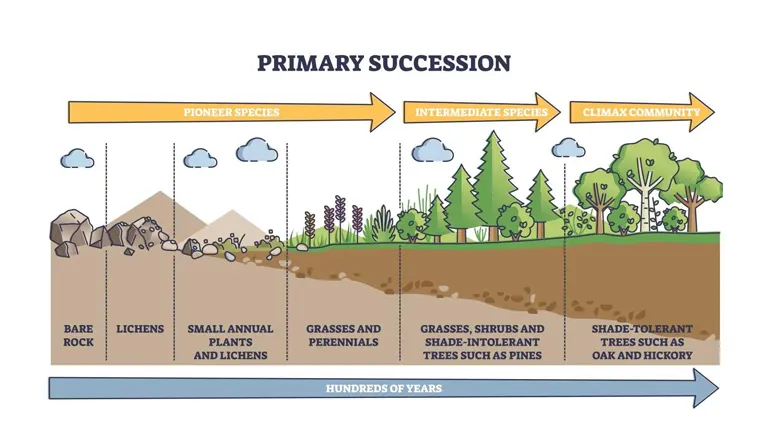
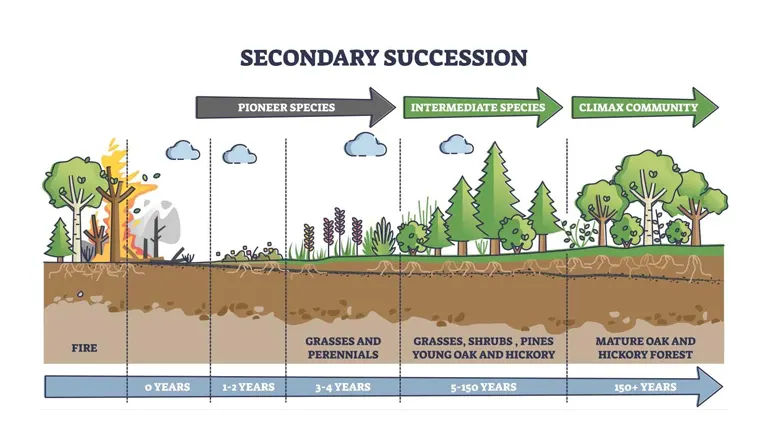
Each stage represents a shift in the composition and structure of the forest, driven by ecological interactions and environmental changes.
- Pioneer Stage: This initial stage is characterized by the rapid colonization of an area by fast-growing, light-loving species. These pioneer species are typically well-adapted to thrive in the open, sunlit conditions that follow a disturbance, such as a fire or clear-cutting. Their growth sets the stage for further ecological development.
- Intermediate Stage: As the forest develops, the pioneer species begin to be overshadowed by more shade-tolerant species. These species, slower-growing but better adapted to the increasingly shaded conditions, gradually outcompete and replace the pioneer species. This transition leads to a shift in the forest’s composition, moving away from the initial, opportunistic species to a more diverse and stable array of plants.
- Climax Stage: The forest eventually reaches what is known as the climax stage, a point of relative stability and balance. In this stage, the species composition of the forest is well-suited to the specific conditions of the area. The ecosystem is thought to be in equilibrium, with a mature, diverse community of plants and animals that are in balance with the available resources and environmental conditions.
Each stage of forest succession plays a crucial role in shaping the ecosystem, providing different habitats, and supporting a diverse range of species. Understanding these stages is essential for effective forest management, conservation efforts, and the restoration of damaged or depleted forest areas.
Management Practices
Forest Succession Management employs both natural and assisted techniques:
- Natural Succession Management: This approach allows a forest to regenerate and evolve through its natural processes with minimal human intervention. It is particularly valuable in conservation areas where the primary goal is to preserve or restore natural ecosystems. By letting nature take its course, this method can lead to the development of diverse and resilient forest ecosystems that reflect the native landscape. Natural succession management is ideal for areas where the natural seed bank is intact, and the ecological conditions are favorable for spontaneous forest recovery and growth.
- Assisted Succession Management: In certain scenarios, human intervention becomes necessary to guide the succession process. This is especially true in landscapes that have been heavily altered by human activity or in areas where specific management goals are in place, such as restoring a particular type of habitat or increasing biodiversity. Assisted succession management might involve planting native species, removing invasive species, or altering the landscape in ways that promote the growth of desired vegetation. This proactive approach is crucial for accelerating ecosystem recovery, particularly in areas where natural processes alone are insufficient to achieve the desired ecological outcomes.
6. Streamside Management Zones
Streamside Management Zones (SMZs) are essential elements in the sustainable management of forested landscapes, particularly in preserving the quality of water bodies within or adjacent to these areas. These zones are strategically designated areas along the banks of streams, rivers, and other water bodies within forests.
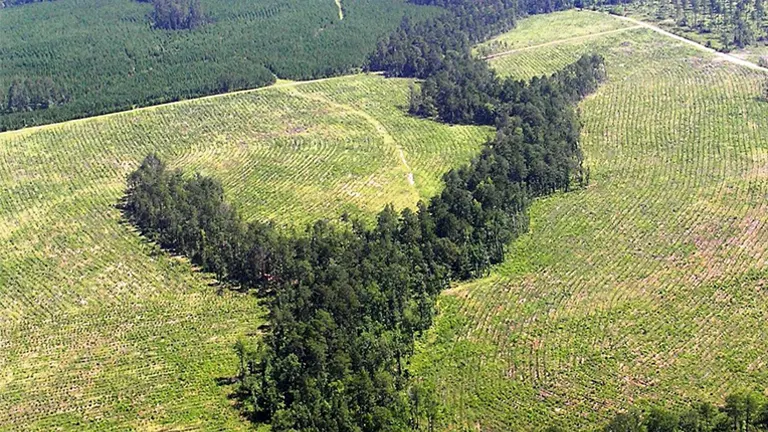
- The core of SMZs is the maintenance of buffer strips of vegetation along waterways. These vegetative buffers are composed of trees, shrubs, and groundcover plants that are either left undisturbed or managed to enhance their effectiveness.
- One of the primary functions of these vegetated buffers is to filter runoff. As overland water flows through the buffer strip, sediments, nutrients, and pollutants are trapped and absorbed by the vegetation and soil, significantly reducing the amount of these materials entering the watercourses.
- The roots of the trees and other vegetation in SMZs help stabilize stream and river banks. This stabilization is crucial in preventing erosion, a process that can lead to increased sedimentation in water bodies, altering habitats, and affecting water quality.
- Beyond their role in water quality protection, these zones provide critical habitats for a wide range of aquatic and terrestrial species. The diverse vegetation creates a conducive environment for fish, amphibians, birds, and other wildlife, contributing to the overall biodiversity of the forest ecosystem.
- In many regions, maintaining SMZs is not just an ecological best practice but also a regulatory requirement, underlining their recognized importance in forest and watershed management.
7. Forest Wetlands Protection
Protecting forest wetlands is a crucial practice in forest management, pivotal for ecological sustainability and environmental balance. Forest wetlands are unique ecosystems that offer a range of vital ecological functions and services.
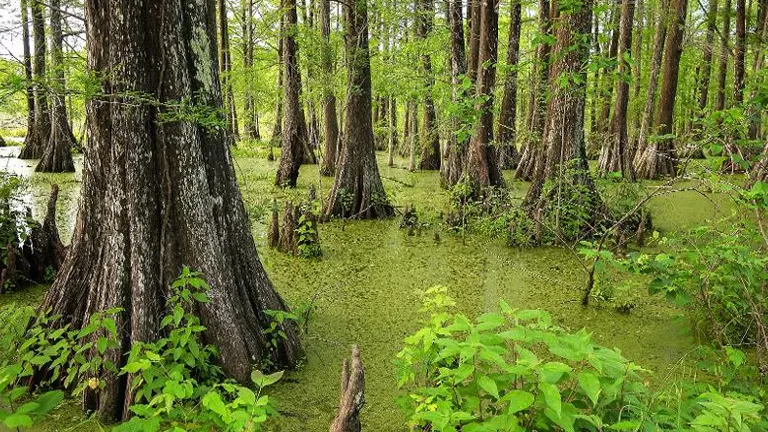
- Forest wetlands are hotspots of biodiversity. They provide habitat for a wide array of species, many of which are specially adapted to wetland conditions. These species include various types of birds, amphibians, fish, and plant life, some of which are rare or endangered. The protection of these wetlands is essential to maintain this rich biodiversity.
- Wetlands play a significant role in purifying water. They act as natural filters, trapping sediments and pollutants, and thus help in maintaining the overall quality of water systems. The vegetation in wetlands is particularly effective in absorbing excess nutrients and chemicals from water, preventing them from reaching rivers, lakes, and other water bodies.
- Forest wetlands are natural water reservoirs. They have the ability to absorb excess rainwater and slow down water flow, thereby playing a critical role in flood control. During periods of heavy rainfall, wetlands can help mitigate the impact of flooding on nearby communities and ecosystems.
- The protection of forest wetlands involves regular monitoring and effective management to ensure that their ecological functions are not compromised. This includes maintaining the natural hydrology of these wetlands, preventing the encroachment of development activities, controlling invasive species, and managing the surrounding land use to reduce pollution runoff.
- Besides the ecological benefits, forest wetlands provide numerous ecosystem services that are invaluable to humans, including water filtration, flood protection, and carbon sequestration. They also offer recreational, educational, and research opportunities.
8. Road Construction and Maintenance
In the realm of forest management, the construction and maintenance of forest roads play a pivotal role. These roads are essential for providing access to various management activities, including timber harvesting, fire control, and recreational use. However, if not properly designed and maintained, they can lead to significant environmental impacts.
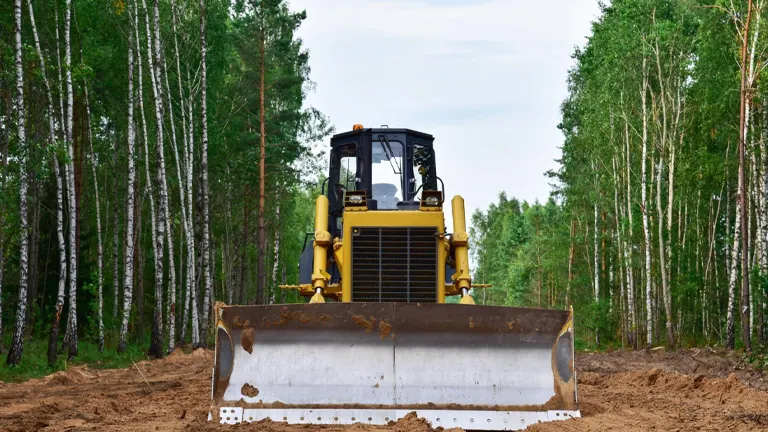
To mitigate these concerns, several key practices are employed:
- The planning phase is crucial. Roads should be laid out to avoid ecologically sensitive areas such as wetlands, riparian zones, and habitats of endangered species. The goal is to minimize the disturbance to the natural environment while still providing efficient access.
- Erosion is a major concern with forest roads, as it can lead to sedimentation in waterways and loss of soil fertility. To combat this, various erosion control techniques are implemented. This includes the design of proper drainage systems, the use of stabilization materials on road surfaces, and the establishment of vegetation on road verges to reduce runoff.
- Consistent and proactive maintenance of forest roads is key to preventing environmental degradation. This involves routine inspections to identify and address issues such as potholes, washouts, and blocked drainage structures. Regular maintenance ensures the longevity of the road while minimizing its environmental footprint.
- Utilizing sustainable construction methods, such as minimizing the width of the road to reduce the amount of vegetation cleared and using locally sourced materials, also contributes to reducing the overall environmental impact.
- Forest roads should be integrated into broader forest management plans. This integration ensures that road construction and maintenance align with other forest management activities and overall conservation goals.
Each of these practices plays a crucial role in sustainable forest management, contributing to the overall health and productivity of forest ecosystems while ensuring their ecological, social, and economic values are preserved for future generations.
Forest Fire Prevention and Management
Forest fires, among the most prevalent natural disasters globally, wreak havoc annually, ravaging vast land areas, destroying homes, and causing significant ecological damage. Effectively managing woodland fires involves understanding their types and implementing strategic measures to mitigate their impact.
Understanding Different Types of Woodland Fires
- Crown Fires: These are the most formidable, spreading rapidly through the treetops, especially under strong wind conditions. They can swiftly engulf large forest areas, making them particularly challenging to control.
- Ground Fires: Occurring beneath the forest floor, ground fires burn through layers of fallen leaves and organic matter. Their primary danger lies in their elusive nature, making early detection difficult.
- Surface Fires: Affecting mainly the forest floor, surface fires are typically easier to manage and less destructive compared to crown and ground fires. They primarily consume underbrush and fallen debris.
Comprehensive Fire Management Strategies
- A fundamental aspect of forest fire prevention is maintaining robust tree health. This involves practices like appropriate fertilization and cultivating a diverse range of tree species to bolster the forest’s natural fire resistance.
- Controlled, intentional burning helps reduce the volume of combustible material in the forest. This preemptive strategy is crucial in lowering the likelihood of uncontrollable wildfires.
- Creating clearings or breaks in vegetation, known as firebreaks, is an effective way to hinder the spread of fires. These barriers can significantly slow down or even halt the progress of a fire.
- Removing weaker, diseased, or overly dense sections of trees through thinning can significantly diminish fire risk. A well-thinned forest not only has a lower propensity for large-scale fires but also exhibits enhanced resilience and recovery post-fire events.
Effective fire prevention in woodlands necessitates a tailored approach, considering the unique characteristics of each forest and available management resources. Employing adaptive forest management, which involves continuous evaluation and adjustment of strategies based on current forest conditions, is key. An integrated approach that combines tree health maintenance, controlled burns, firebreaks, and strategic thinning forms a robust defense against the potentially devastating impact of forest fires.
Leveraging Satellite Technologies in Modern Forest Management
The field of forest management has significantly evolved with the integration of technological advancements, particularly in satellite monitoring. Tools like the EOSDA Forest Monitoring software mark a significant leap in this direction. This advanced software empowers landowners with the ability to monitor changes in woodland remotely.

It’s a game-changer in tracking forest health indicators and streamlining the planning of various management activities. One of the key strengths of satellite data is its versatility – it supports a wide range of applications from monitoring deforestation rates to predicting potential fire risks. This technology provides a comprehensive and real-time view of forest conditions, making forest management more efficient and effective.
The Imperative of Sustainable Forest Management
In today’s context, sustainable forest management is more than a choice; it’s an imperative driven by the escalating challenges of climate change and environmental sustainability. Forests are invaluable as renewable resources, but their mismanagement can lead to severe economic and environmental consequences. The ongoing threat of climate change, with its implications for global food production and ecosystem stability, underscores the need for sustainable practices in forestry. The fusion of traditional management methods with advanced technologies like satellite monitoring represents a modern, holistic approach to forestry. This integration ensures that forests are managed sustainably, balancing economic viability with environmental stewardship.

Furthermore, the role of forests extends beyond timber and biodiversity conservation; they are pivotal in maintaining our freshwater supply. Approximately two-thirds of our drinking water comes from forested catchments. The enactment of the Clean Water Act has further cemented the need to manage forest lands with water quality as a primary consideration. Ensuring the health of these forests is crucial, not only for maintaining biodiversity and mitigating climate change but also for safeguarding the quality and availability of freshwater for future generations. In essence, sustainable forest management is a comprehensive approach that addresses a multitude of environmental, economic, and social goals, ensuring that forests continue to benefit humanity in a multitude of ways.
Conclusion
Forest management is an intricate dance between preserving nature’s bounty and harnessing its resources responsibly. It requires a delicate balance of knowledge, planning, and adaptation to changing conditions. By blending traditional practices with modern technologies, we can ensure that our forests continue to thrive, supporting both our environment and our economies. In this era of environmental consciousness, sustainable forest management isn’t just a choice; it’s an imperative for the well-being of our planet and all its inhabitants.
FAQs
- What is the work of forest management?
Forest management involves a range of activities to maintain, enhance, and protect forest ecosystems. This includes managing forest growth, health, and biodiversity, as well as planning timber harvests, reforestation, and protecting the forest from fires, pests, and diseases. - What is the meaning of forest management?
Forest management refers to the practical application of scientific, economic, and social principles to the administration and care of forests. It aims to balance the use of forest resources with conservation efforts to ensure sustainable and healthy forests. - How can we manage forestry?
Forestry can be managed through practices like sustainable timber harvesting, reforestation, controlled burns, managing wildlife habitats, preventing and controlling forest fires, and monitoring forest health using advanced technologies. - What are the best forest management practices?
The best practices include sustainable timber harvesting, biodiversity conservation, reforestation, ecosystem restoration, controlled burning, pest management, and creating and maintaining protective areas like buffer zones around waterways. - What are the basics of forestry?
The basics of forestry involve understanding tree biology, forest ecology, and the dynamics of forest ecosystems. It also includes knowledge of forest management techniques, conservation practices, and the impact of human activities on forests. - How does forestry affect the environment?
Forestry impacts the environment in various ways. Sustainable practices enhance biodiversity, improve air and water quality, and support wildlife. Conversely, unsustainable practices can lead to deforestation, habitat loss, and environmental degradation. - What is the role of forestry in environmental protection?
Forestry plays a crucial role in environmental protection by maintaining ecological balance, conserving biodiversity, protecting soil and water resources, sequestering carbon, and providing habitats for countless species. - What is the importance of forest trees in the environment?
Forest trees are vital for the environment as they act as carbon sinks, improve air quality, support biodiversity, regulate water cycles, prevent soil erosion, and provide habitats and resources for wildlife. - What affects forestry?
Forestry is affected by factors such as climate change, deforestation, urbanization, pollution, invasive species, natural disasters, market demands for timber and non-timber products, and policy and land use changes. - How do forests help in maintaining global climate?
Forests help maintain the global climate by absorbing carbon dioxide, a major greenhouse gas, thus mitigating climate change. They also influence local climates by regulating temperatures, maintaining humidity, and supporting the water cycle.

David Murray
Forestry AuthorI'm David Murry, a forestry equipment specialist with a focus on chainsaw operation. With over 13 years of experience, I've honed my skills in operating and maintaining a wide range of machinery, from chainsaws to log splitters. My passion for the outdoors and commitment to sustainable forestry drive my work, which emphasizes safety, efficiency, and staying updated with industry advancements. Additionally, I'm dedicated to sharing my expertise and promoting environmental awareness within the forestry community.













I found the write-up very informative. Please feel free to share any further information you may have on tropical forest management with me. I am keen to understand more about tropical forests' diverse roles and aspects - commercial, ecological, and environmental conservation, climate action, social, livelihood, cultural, etc.
Edward Dwumfour
October 11, 2024 9:55 pm